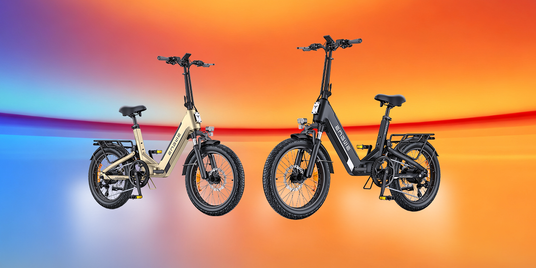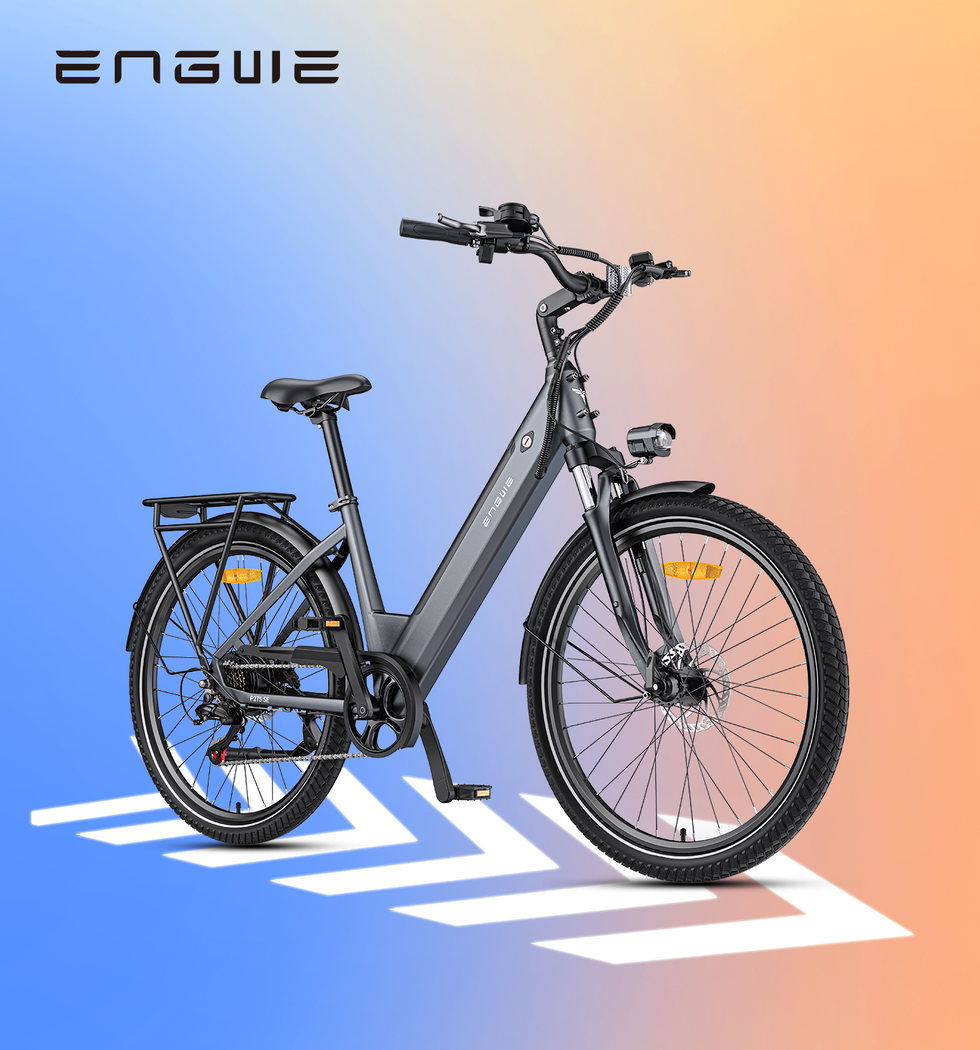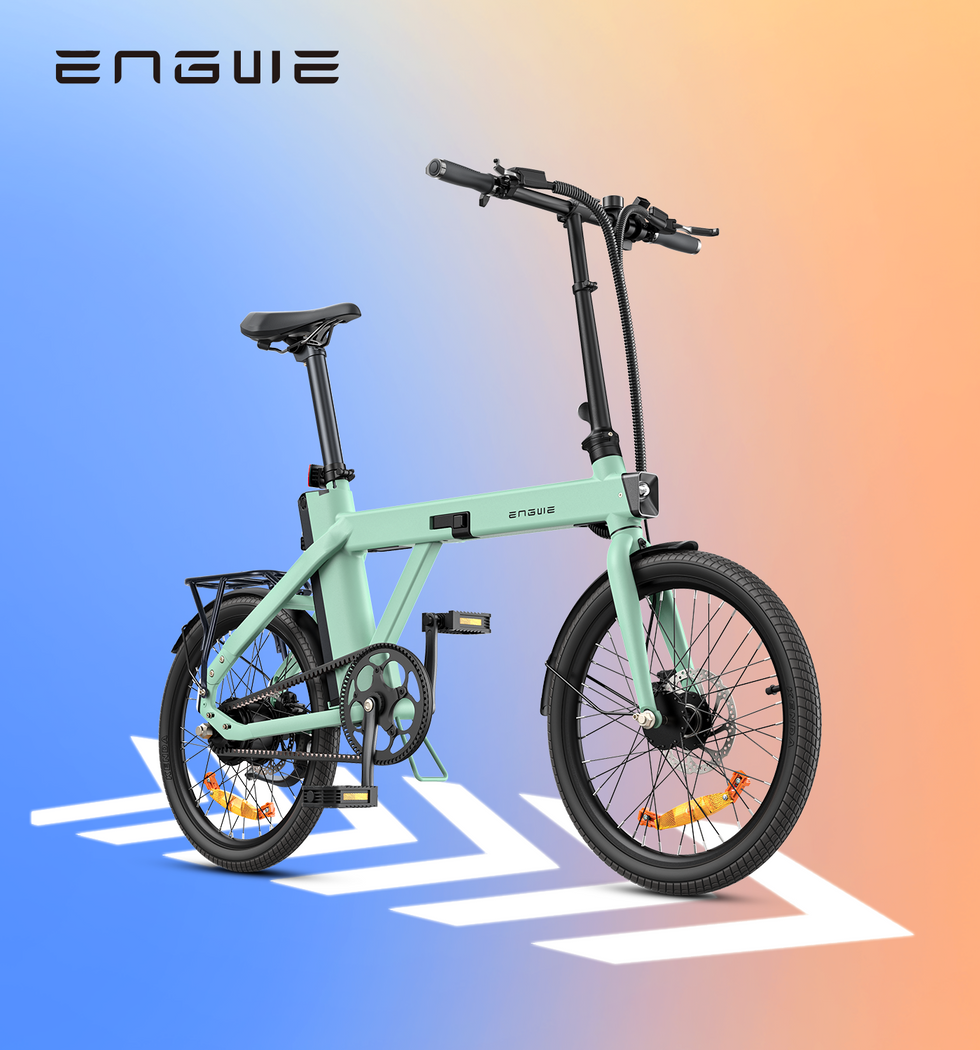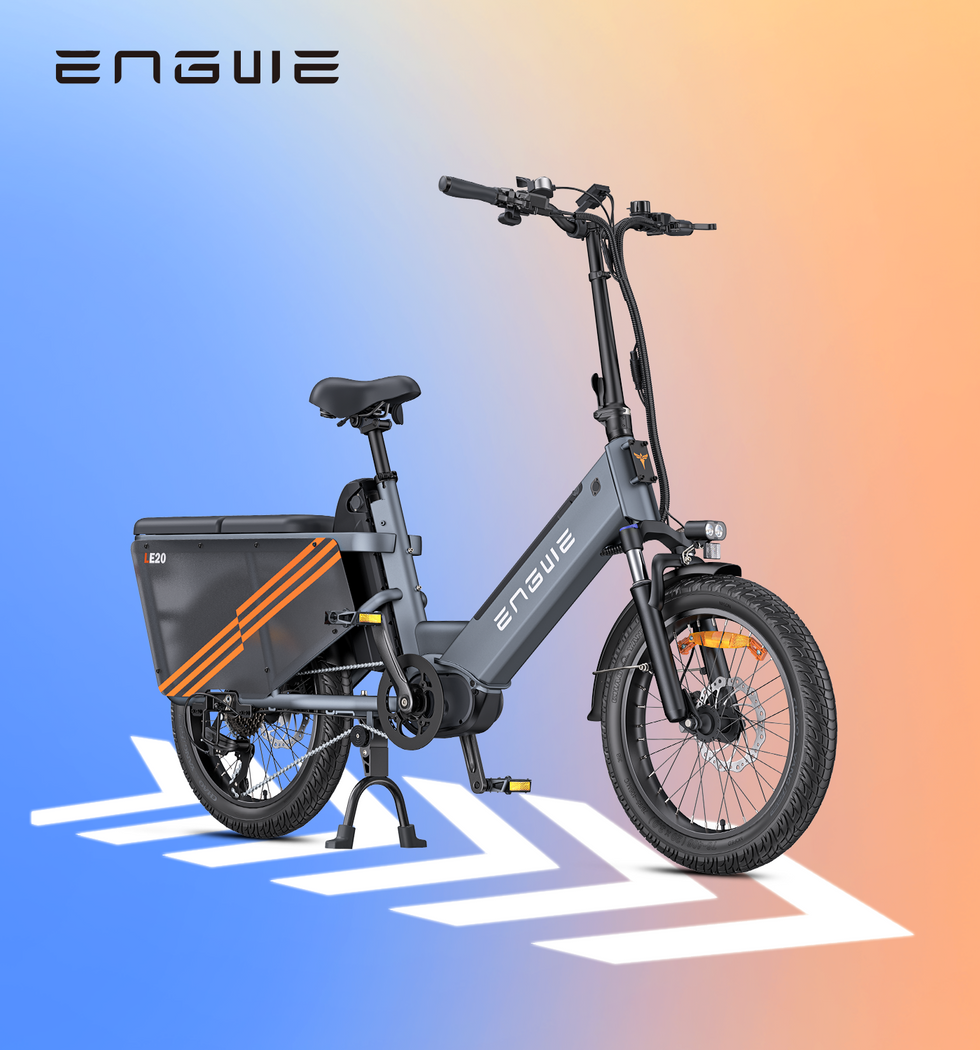That familiar feeling of dread. It’s time for the weekly shop. You picture the hassle: searching for a parking space, the fuel cost for a short trip, or the strain of lugging heavy bags back from the bus stop. It turns a simple task into a genuine chore. But what if you could transform it into an enjoyable, efficient, and even invigorating part of your week? An electric bike for grocery shopping isn't just a novelty; for many, it's a revolutionary tool that reclaims time, saves money, and makes errands genuinely pleasant. This is about turning a mundane necessity into a moment of freedom.
User Problem & Article Solution Structure
| User's Potential Question / Problem | How This Article Addresses It |
|---|---|
| "Why should I even consider an e-bike for groceries? My car/the bus/walking works." | Section 1: The Practical Magic of the Grocery E-Bike. We directly compare the e-bike to traditional methods, highlighting key benefits like cost savings, environmental impact, and convenience. |
| "I'm convinced, but what features actually matter? I don't know what to look for." | Section 2: The Anatomy of a Perfect Grocery Hauler. This breaks down the essential technical features (payload, frame, motor, battery, brakes) into easy-to-understand concepts, explaining why they are crucial for this specific task. |
| "Okay, I know what to look for. Can you just recommend a great one?" | Section 3: The Ultimate Solution for Your Shopping Needs. This section provides a direct, well-supported recommendation, focusing on one specific model that excels in all the previously discussed areas, serving as a powerful and trustworthy suggestion. |
| "This all sounds good in theory, but what is it really like to use one?" | Section 4: A First-Hand Account: My Weekly Shop Transformed. An experiential narrative that walks the user through a real-world grocery run, demonstrating the practical application and emotional benefits of using an e-bike. |
| "What else do I need? And how do I keep my expensive new bike safe?" | Section 5: Essential Gear and Security for the Savvy Shopper. This addresses the secondary but vital concerns of accessories (panniers, baskets) and security, providing actionable advice to complete their setup and protect their investment. |
| "I still have some specific worries..." | FAQ Section. We conclude by tackling the most common lingering questions about battery drain, handling, bike size, and safety, providing clear, detailed answers to build final confidence. |
The Practical Magic of the Grocery E-Bike
Let’s be honest, using a car for a two-mile round trip to the supermarket feels excessive. It’s inefficient, contributes to local congestion, and the hunt for a parking spot can be infuriating. On the other hand, walking or using a conventional bicycle limits you to what you can comfortably carry, often meaning more frequent, smaller trips or sore shoulders. An electric bike sits in the sweet spot, offering the perfect solution. The electric assist eliminates the strain of carrying heavy loads, turning hills into gentle slopes and headwinds into a mild breeze. You get the benefit of light exercise and fresh air without arriving at the checkout out of breath. Over time, the savings on fuel, parking, and even public transport fares add up significantly, making the electric bike a sound financial investment as well as a lifestyle upgrade.
The Anatomy of a Perfect Grocery Hauler
Not all electric bikes are created equal, especially when the task is carrying a week's worth of food. When you’re looking for an electric bike for grocery shopping, you're essentially looking for a reliable workhorse. Here are the non-negotiable features you must prioritise.
Payload capacity and frame design
First and foremost is the payload capacity and frame design. This is the total weight the bike can safely support, including you and your shopping. Look for a bike with a high payload capacity, often found on dedicated cargo models. A sturdy rear rack is essential, and a frame-mounted front rack or basket is a brilliant bonus. Critically, consider a step-through frame. When the bike is loaded with bags, swinging your leg over a high crossbar is awkward and unsafe. A step-through design makes mounting and dismounting effortless and secure.
Motor and battery
Next, consider the motor and battery. You don’t need blistering top speed, but you do need torque. Torque is the rotational force that gets you moving from a standstill, and it's what you’ll rely on to pull away from traffic lights with a full load. A motor with ample torque makes a heavy bike feel light. The battery, meanwhile, determines your range. Whilst most grocery trips are short, a larger capacity battery provides peace of mind and means you won't need to charge it after every single trip. A reliable, long-range battery is a sign of a quality build.
Brakes and stability
Finally, you cannot compromise on brakes and stability. A heavily loaded bike carries a lot of momentum and requires powerful, responsive brakes to bring it to a safe stop, especially in wet conditions. Hydraulic disc brakes are the gold standard here, offering superior stopping power and control with less effort. Complementing this are the tyres. Look for wider, puncture-resistant tyres. They provide a larger contact patch with the road for better stability and give you the confidence that a stray piece of glass won’t derail your trip home.

The Ultimate Solution for Your Shopping Needs
When you combine all the ideal features for a grocery-hauling machine, one model stands out as a purpose-built champion: the ENGWE LE20. This isn't just an e-bike with a rack; it's a dedicated step-through cargo e-bike designed from the ground up for heavy-duty tasks. Its most impressive feature is the colossal 200 kg payload capacity, allowing you to carry children, pets, or the most ambitious grocery shop with complete confidence. The 6061 aluminium alloy step-through frame is both robust and incredibly accessible. Powering your journey is a potent 250W brushless motor delivering a hefty 75 Nm of torque, more than enough to make even the heaviest loads feel manageable on inclines. It features an advanced torque sensor which intelligently matches the motor's assistance to your pedalling effort, providing a smooth, intuitive ride and optimising battery life. For safety, the LE20 is equipped with powerful 180mm hydraulic disc brakes and robust 20x3.0" puncture-proof tyres for maximum stability and control. And with a single battery offering up to 180 km of range (and a dual battery version pushing an incredible 350 km), range anxiety becomes a thing of the past. The ENGWE LE20 is the definitive tool for anyone serious about replacing their car for local errands.

A First-Hand Account: My Weekly Shop Transformed
My first grocery run on a proper cargo e-bike was a revelation. I attached two large pannier bags to the rear rack, bags I’d normally struggle to carry 20 feet from the car. The ride to the supermarket was a joy. Instead of sitting in traffic, I was gliding along a cycle path, feeling the sun and a gentle breeze. The electric assist on a medium setting meant I was pedalling gently, getting my heart rate up without breaking a sweat. Parking was the best part; I bypassed the entire car park and locked the bike to a rack right beside the entrance. The real test, however, was the journey home. I loaded the panniers with milk, juice, tins, vegetables, and a large bag of potatoes. I could feel the weight as I wheeled the bike from the rack, and for a moment, I was nervous. But as I pushed off and started to pedal, the magic happened. The torque sensor detected my effort and the motor instantly whirred to life, smoothly taking the strain. The 40kg of shopping might as well have been a feather. The bike felt planted and stable, the wide tyres absorbing bumps in the road. Approaching a steep hill that I would normally avoid, I simply pedalled steadily as the motor provided the power, and I sailed up it without a struggle. Arriving home wasn't a moment of exhausted relief, but one of genuine satisfaction. The chore was done, and I’d had fun doing it.
Essential Gear and Security for the Savvy Shopper
To maximise your grocery-getting potential, the right accessories are key. High-capacity, waterproof pannier bags that clip securely onto your rear rack are the most popular choice. A large, sturdy front basket is perfect for lighter, more delicate items like bread and eggs. For truly large shops, consider a box or crate securely fastened to the rear rack. Your electric bike is a valuable asset, so security is paramount. A cheap cable lock simply won't do. Invest in a high-quality, Sold Secure rated lock, preferably a D-lock or a heavy-duty chain. When parking at the shops, always lock the frame of the bike to an immovable object. At home, store it in a locked garage or shed if possible. If it must be kept outside, use a ground anchor and a weatherproof cover. For ultimate peace of mind, consider a GPS tracker, which can be concealed on the bike and allows you to locate it via an app if the worst should happen.

Frequently Asked Questions
1. How much weight can I realistically carry on an e-bike?
This depends entirely on the bike's specified payload capacity. A standard commuter e-bike might handle 15-25 kg on a rear rack. However, a dedicated cargo e-bike like the ENGWE LE20 is designed for much heavier loads, with a total capacity of 200 kg (rider included). The key is to distribute the weight evenly and low down in panniers to maintain a low centre of gravity. Always check your bike's manual for its specific limits and start with lighter loads to get a feel for how the bike handles before attempting a maximum-capacity shop.
2. Will a heavy load of groceries drain my battery much faster?
Yes, it will, and this is an important factor to plan for. The motor has to work harder to move more mass, especially from a standstill and on hills. A good rule of thumb is that a heavy load on varied terrain could reduce your maximum potential range by 25-40% compared to riding unladen on flat ground. However, bikes with large-capacity batteries are built with this in mind, ensuring you still have more than enough range for multiple round trips to the shops before needing a recharge. Using a lower assistance level on flat sections will also help conserve battery life.
3. Is a cargo e-bike too big and heavy for everyday use?
Whilst cargo e-bikes are larger and heavier than standard bikes, they are surprisingly manageable. Features like a step-through frame make them very easy to get on and off, and a 'walk assist' mode (which many have) allows the motor to help you push the bike at walking speed. The main consideration is storage. They take up more space than a regular bike, so you need to ensure you have a suitable place to keep one at home. For the sheer utility they offer, most owners find the trade-off in size is more than worth it.
4. What's the difference between a torque sensor and a cadence sensor for grocery shopping?
This is a crucial distinction. A cadence sensor simply detects if you are pedalling and delivers a set amount of power for your chosen assistance level. It can sometimes feel jerky, like an on/off switch. A torque sensor, which is a more advanced technology, measures how hard you are pedalling. It then delivers a proportional amount of assistance. This results in a much smoother, more intuitive ride that feels like a natural extension of your own effort. For carrying heavy groceries, a torque sensor is far superior as it provides instant, powerful support when you push hard to get moving from a stop, and eases off when you're cruising, making the bike feel more controlled and efficient.
5. How do I safely ride an e-bike that is fully loaded with shopping?
Safety is key. Firstly, brake earlier. The extra weight means you have more momentum and it will take you longer to stop. Secondly, take corners more slowly and widely than you would on an unladen bike. Thirdly, ensure your load is secure and balanced, with the heaviest items packed at the bottom of your panniers. Check that no straps or bags can get caught in the wheel spokes or chain. Finally, use your lights, even during the day, to increase your visibility to other road users who may not anticipate how a heavily-loaded bicycle will behave.
An electric bike makes grocery shopping not just easier, but fundamentally better.



